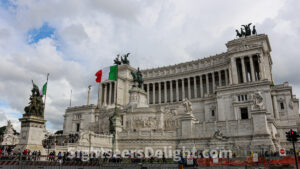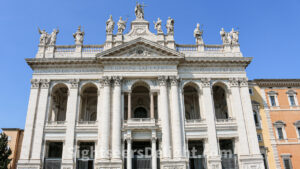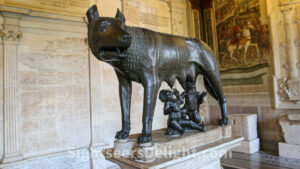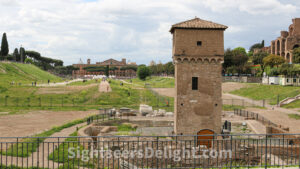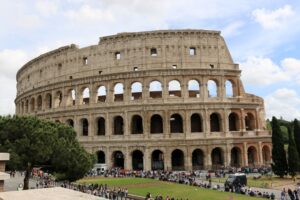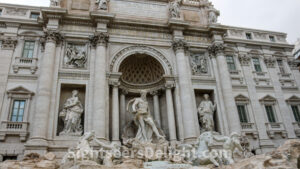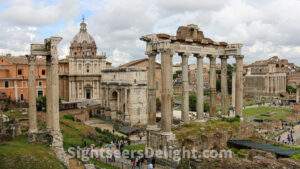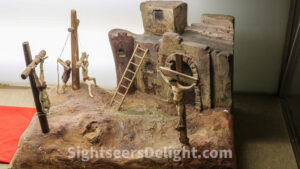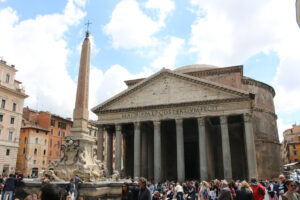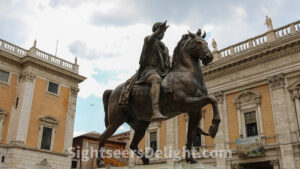The Altare della Patria (or Altar of the Fatherland) is perhaps better known as the Monumento Nazionale a Vittorio Emanuele II (or the National Monument to Victor Emmanuel II). Many also call it the Wedding Cake. Sitting between Piazza Venezia and the Capitoline Hill, it was built to honor Victor Emmanuel II, the first king of a unified Italy. The monument is also the location of the Tomb of the Unknown Soldier and features an eternal flame and the museum of Italian Unification.
Basilica di San Giovanni in Laterano or the Cathedral of the Most Holy Savior and of Saints John the Baptist and the Evangelist in the Lateran is the cathedral church of Rome. The church, which is the oldest and highest ranking of the four papal major basilicas, is home to the cathedra of the Roman bishop and is the ecumenical mother church of the Catholic faithful.
The Capitoline Museums are located on the Piazza del Campidoglio atop of Capitoline Hill in the heart of Rome. Pope Clement XII opened the museums to the public in 1734. The museum’s stunning collection includes the Ancient Roman Dying Gaul (also known as the Dying Galatian) statue, the bronze statue of the Capitoline Wolf nursing Romulus and Remus and the original equestrian statue of Marcus Aurelius that once stood in Piazza del Campidoglio.
Circus Maximus, which means the largest circus in Latin, was once home to chariot races during Roman times. The stadium, located between the Aventine and Palatine hills, could hold more than 150,000 spectators and was a model for circuses across the Roman Empire. It is today a public park.
The Colosseo or Colosseum has lasted generations and is perhaps the best and most widely-known symbol of Rome’s past. Started in 72 AD, the Colosseum could hold 50,000 people, and it could be emptied in a matter of minutes and had a retractable roof. But, if that’s not outrageous enough, the Romans at times filled the stadium with water so they could reenact sea battles for war-loving crowds. Today, the building is perhaps best remembered for the gladiator fights that once took place there. The Colosseum remained in us until it was damaged in a fire in 217, giving it a roughly 145-year run.
Nicola Salvi in 1732 won a competition to design a new fountain in the Trevi district of Rome. Giuseppe Pannini completed the fountain in 1762. Legend says anyone who tosses a coin into the fountain’s waters will return to Rome. The fountain, featured in countless movies, was built on the site of an earlier fountain.
The Foro Romano or Roman Forum was formerly the center of day-to-day life in Rome. Surrounded by government buildings, residents referred to the area as Forum Magnum or the Forum. It also served as a venue for public speeches, criminal trials and gladiator matches.
Anyone wanting a unique look at the past should look no further than the Museo Criminologico or Crime Museum. Educational and informative, this small museum is also home to some real oddities, such as the Milazzo Cage. This horrible body-shaped iron cage that still contains the remains of its last inhabitant. Kids will assuredly love it.
Started in 27 BC, the Pantheon, built as a temple to the ancient Roman gods, is considered by many to be the glory of Rome. The building has it all, from columns to marble to monuments. Without a doubt, it is a testament to Rome’s grandeur and illustrious past.
Piazza del Campidoglio is an Italian square at its finest. Designed by Michelangelo, the original Renaissance man, the Piazza is a great place for the weary traveler to take a respite and lose oneself in the moment.

